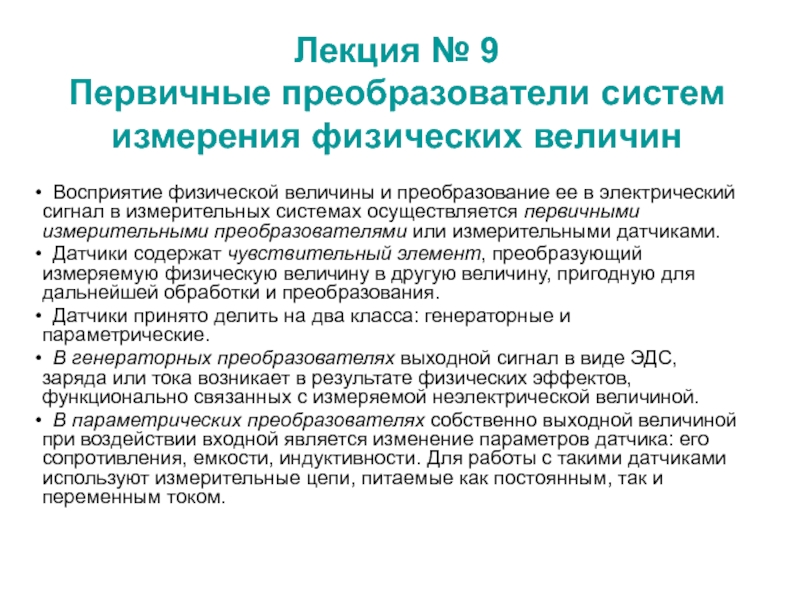Разделы презентаций
- Разное
- Английский язык
- Астрономия
- Алгебра
- Биология
- География
- Геометрия
- Детские презентации
- Информатика
- История
- Литература
- Математика
- Медицина
- Менеджмент
- Музыка
- МХК
- Немецкий язык
- ОБЖ
- Обществознание
- Окружающий мир
- Педагогика
- Русский язык
- Технология
- Физика
- Философия
- Химия
- Шаблоны, картинки для презентаций
- Экология
- Экономика
- Юриспруденция
Dr. Daniel Carleton Gajdusek
Содержание
- 1. Dr. Daniel Carleton Gajdusek
- 2. Table of contents :pageDoctor's name ...................................................................................................................... 4Daniel
- 3. Daniel Carleton Gajdusek was an American physician
- 4. 1.Doctor's nameDaniel Carleton Gajdusek 2.BiographyGajdusek was born
- 5. There were so many deaths it was
- 6. psychosomatic. He sent brains to be analysed
- 7. It was a triumphant moment for Gajdusek,
- 8. his conviction, taking the view that "boys
- 9. 3.Contribution to medicineKuru researchGajdusek's best-known work focused
- 10. were caused by a new infectious agent
- 11. Conclusion :Daniel Carleton Gajdusek .was an American
- 12. Скачать презентанцию
Слайды и текст этой презентации
Слайд 2Table of contents :
page
Doctor's name ...................................................................................................................... 4
Daniel Carleton Gajdusek ....................................................................................................
4
Biography ............................................................................................................................ 4
Contribution to medicine...................................................................................................... 9
Kuru research....................................................................................................................... 9
"Unconventional viruses ''
.................................................................................................. 10These infectious agents were later discovered to be misfolded proteins, or prions. ............ 10 Conclusion : ....................................................................................................................... 11
Reference ........................................................................................................................... 11
Page of 11
Слайд 3Daniel Carleton Gajdusek was an American physician and medical researcher
who was the co-recipient (with Baruch S. Blumberg) of the
Nobel Prize in Physiology or Medicine in 1976 for work on an infectious agent which would later be identified as kuru.An American virologist who worked in the United States, Iran and Australia to study infectious diseases, particularly Coro disease, which is a viral brain disease that was spread among early New Guinea residents through cannibalism.
Page of 11
Слайд 41.Doctor's name
Daniel Carleton Gajdusek 2.Biography
Gajdusek was born in Yonkers, New
York, to east European immigrants.
He studied biophysics at Rochester University,
graduating in 1943, and medicine at Harvard, qualifying in 1946.He then did research at Caltech (the California Institute of Technology) under Linus Pauling and Max Delbruck, and research at Harvard under John Enders.
All three scientists later became Nobel laureates.
In the 1950s, doing his army service, Gajdusek helped show that the haemorrhagic fever killing US soldiers in South Korea was spread by migrating birds.
In 1954, the US Centers for Disease Control (CDC) sent him to a camp in Bolivia for native American Okinawans transported there by the US navy after the second world war.
Page of 11
Слайд 5There were so many deaths it was rumored to be
an extermination camp; but he showed that the deaths were
by natural causes and fighting. The CDC offered him a job."You're a screwball", said his boss, "but you're my kind of screwball."
Gajdusek declined the offer and went to work with another Nobel-laureate-to-be, the immunologist Sir Macfarlane Burnet, in Melbourne.
In 1957 Burnet sent him to Port Moresby, New Guinea, to set up part of a multinational study on child development, behavior and disease, where he heard about a mystery illness called kuru affecting a tribe of the eastern highlands.
A neuroscientist explains:
the need for ‘empathetic citizens’ - podcast
The Fore, always willing to adopt new customs, had copied a neighbouring tribe, the Anga, some years earlier and taken up cannibalism.
They abandoned it when missionaries told them that eating people is wrong. Their kuru was more recent and becoming more prevalent.
Gajdusek began mapping its incidence, noting that nobody recovered. Dozens of blood samples revealed nothing untoward.
By April 1957 he had 28 cases and 13 deaths. By June he had 200 deaths; most were women and children.
Kuru sufferers shrieked, stumbled, jerked and twitched, were belligerent and prone to mirth. Gajdusek wanted to know if the disease was genetic, infectious, environmental or
Page of 11
Слайд 6psychosomatic. He sent brains to be analysed in Australia and
at the US National Institutes of Health (NIH).
He investigated what
the Fore ate, drank or touched. He tried ad hoc treatments: vitamins, steroids, antibiotics. Nothing worked.Meanwhile, the Americans noted that the brains were similar to those of CJD patients. Burnet proposed sending out a multidisciplinary team. Gajdusek replied that he was that team. Around this time he visited the Anga. They did not have kuru but did have an interesting form of welcome: the youths persistently offered to fellate him and regarded it as great fun.
After nine months, Gajdusek returned to NIH. There, an American scientist, William Hadlow, wrote saying how similar the brains looked to brains of sheep infected with scrapie.
Gajdusek inoculated chimps with extracts of Fore brains, knowing it would be a long time incubating, and went back to the hospital he had founded for the Fore.
He visited other tribes with paedophiliac traditions, and in 1963 brought to the US the first of his 56 adopted sons, a 12-year-old Anga boy, who landed barefoot in Washington with a bone through his nose.
He put them all through high school, and many through university or medical school. In 1965, two years after they had been inoculated, the chimps started to become ill.
Gajdusek consulted a British expert on sheep scrapie, who confirmed that the chimps had
died of the same disease that killed the Fore.
Page of 11
Слайд 7It was a triumphant moment for Gajdusek, says the science
writer DT Max, author of The Family That Couldn't Sleep,
a history of prion disease research:proof that the disease was caused by an infectious agent. By 1976, when he received his Nobel prize, Gajdusek had published 150 papers.
He published a further 450 papers on "slow virus" diseases and ethnography.
In 1974 an American neurologist and neuroscientist, Stanley Prisoner, entered the field and coined the term prion (for proteinaceous infectious particle, and incorporating the first two letters of his surname).
Prusiner received a Nobel prize in 1997.
In the 1990s a member of Gajdusek's lab had told the FBI that something fishy was going on and that clues might lie in Gajdusek's diaries.
They contained nothing incriminating, apart from a Prufrock-like reference to his inhibitions.
The FBI questioned Gajdusek's adopted sons and found one who was willing to testify; in a taped phone call from the boy, Gajdusek admitted they had masturbated each other.
None of the other boys said Gajdusek had touched them and several were willing to give evidence in his favour.
Many distinguished scientists pleaded for clemency for him.
Gajdusek was 74 when he emerged after serving a year in prison, his health broken. He retired to Amsterdam, spending his winters in Tromso, Norway. He was unapologetic about
Page of 11
Слайд 8his conviction, taking the view that "boys will be boys".
He is survived by his adopted children.
Daniel Carleton Gajdusek, medical
researcher, born 9 September 1923; died 12 December 2008Gajdusek's father, Karol Gajdusek, was a butcher, an ethnic Slovak from
Büdöskő, Kingdom of Hungary (now Smrdáky, Slovakia). His maternal grandparents,
ethnic Hungarians of the Calvinist faith, emigrated from Debrecen, Hungary. Gajdusek was born in Yonkers, New York, and graduated in 1943 from the University of Rochester, where he studied physics, biology, chemistry and mathematics. He obtained
an M.D. from Harvard University in 1946 and performed postdoctoral research at Columbia University, the California Institute of Technology, and Harvard. In 1951, Gajdusek was drafted into the U.S. Army and assigned as a research virologist at the Walter Reed Army Medical Service Graduate School.[5] In 1954, after his military discharge, he went to work as a visiting investigator at the Walter and Eliza Hall Institute of Medical
Research in Melbourne, Australia.
There, he began the work that culminated in the Nobel prize.
Page of 11
Слайд 93.Contribution to medicine
Kuru research
Gajdusek's best-known work focused on kuru. This
disease was rampant among the South Fore people of New
Guinea in the 1950s and 1960s. Gajdusek connected the spread of the disease to the practice of funerary cannibalism by the South Fore. With elimination of cannibalism, kuru disappeared among the South Fore within a generation.Gajdusek was introduced to the problem of kuru by Vincent Zigas, a district medical officer in the Fore Tribe region of New Guinea. Gajdusek provided the first medical description of this unique neurological disorder, which was miscast in the popular press as the "laughing sickness" because some patients displayed risus sardonicus as a symptom. He lived among the Fore, studied their language and culture, and performed autopsies on kuru victims.
was shown to have remarkable similarity to scrapie, a disease of sheep and goats caused by an unconventional infectious agent. Subsequently, additional human agents belonging to the same group were discovered. They include sporadic, familial, and variant Creutzfeldt– Jakob disease. Gajdusek recognized that diseases like Kuru and Creutzfeldt–Jakob disease
Page of 11
Слайд 10were caused by a new infectious agent that had not
yet been identified.[2] Further research on the scrapie agent by
Stanley Prusiner and others led to the identification of endogenous proteins called prions as the cause of these diseases."Unconventional viruses ''
In his 1977 paper "Unconventional Viruses and the Origin and Disappearance of Kuru," Gajdusek postulated that the cause of kuru, scrapie and Creutzfeldt–Jakob disease were caused by what he termed an unconventional virus. In comparison to normal viruses, unconventional viruses had a long incubation period and did not cause an immune system response in the host. Although Gajdusek noted that there were no demonstrable nucleic acids in unconventional viruses, he did not rule out the possibility that unconventional viruses contained RNA in a smaller amount despite radiation resistance [9]
These infectious agents were later discovered to be misfolded proteins, or prions.
Gajdusek concluded that kuru was transmitted by the ritualistic consumption of the brains of deceased relatives, which was practiced by the Fore. He then proved this hypothesis by successfully transmitting the disease to primates and demonstrating that it had an unusually long incubation period of several years.[6] He did this by drilling holes into chimps' heads and placing pureed brain matter into the cerebellum.[7][8] These animals then developed symptoms of kuru.
This was the first demonstration of the infectious spread of a no inflammatory degenerative disease in human
Page of 11
Слайд 11Conclusion :
Daniel Carleton Gajdusek .was an American physician and medical
researcher who was the co-recipient (with Baruch S. Blumberg) of
the Nobel Prize in Physiology or Medicine in 1976 for work on an infectious agent which would later be identified as kuru, the first known human prion disease .In 1996, Gajdusek was charged with child molestation and, after being convicted, spent 12 months in prison before entering a self-imposed exile in Europe, where he died a decade later. His papers are he at the National Library of Medicine in Bethesda, Maryland.[3] and at the American Philosophical Society in Philadelphia, Pennsylvania.[4]
Reference :
Holley, Joe (December 16, 2008) "D. Carleton Gajdusek; Controversial Scientist", The Washington Post, p. B5.
Jump up to:a b "Physiology or Medicine 1976 – Press Release". Nobelprize.org. October 14, 1976. Retrieved July 21, 2018.
D. Carleton Gajdusek Papers 1918–2000". National Library of Medicine.
"D. Carleton (Daniel Carleton) Gajdusek correspondence, 1934-1988". American Philosophical Society.
Maugh, Thomas (December 18, 2008). "D. Carleton Gajdusek dies at 85; Nobel Prize winner identified exotic disease, was unrepentant pedophile". Los Angeles Times.
Retrieved May 12,2012.
Page of 11
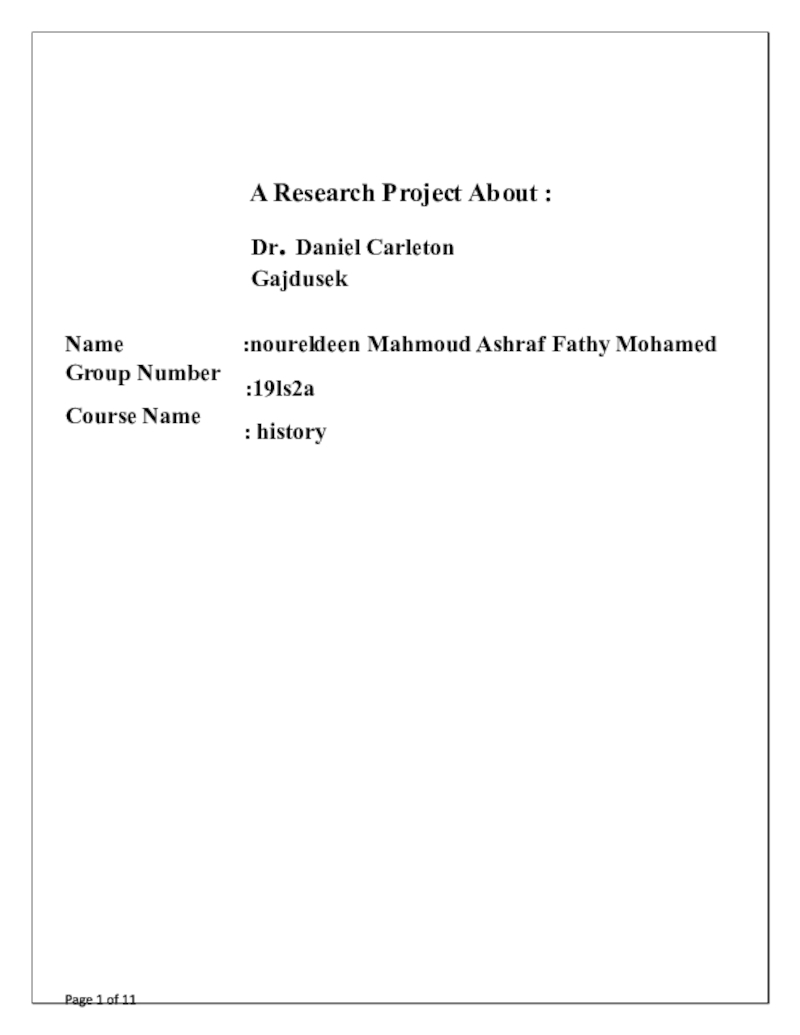


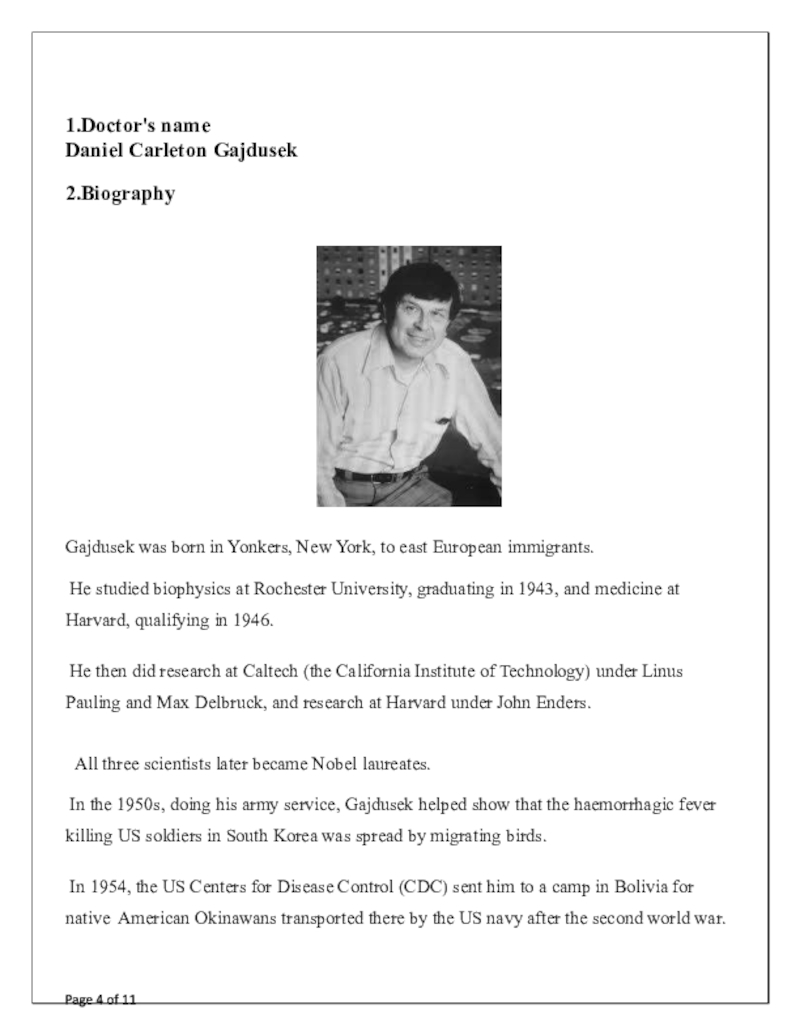
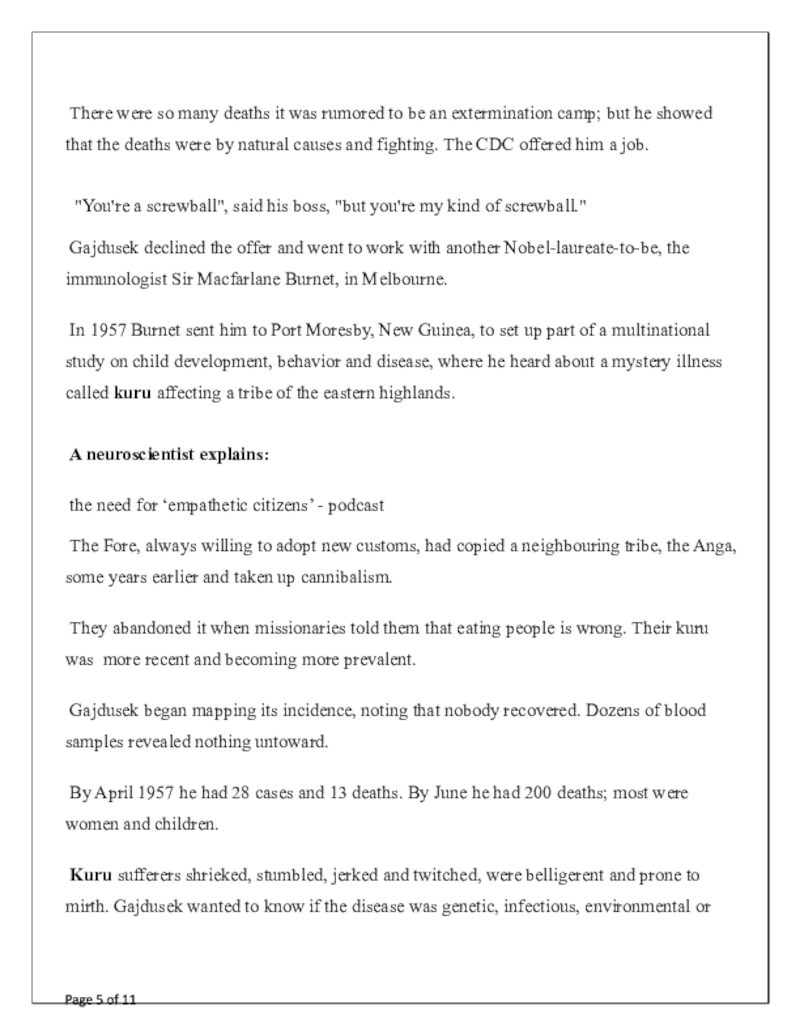
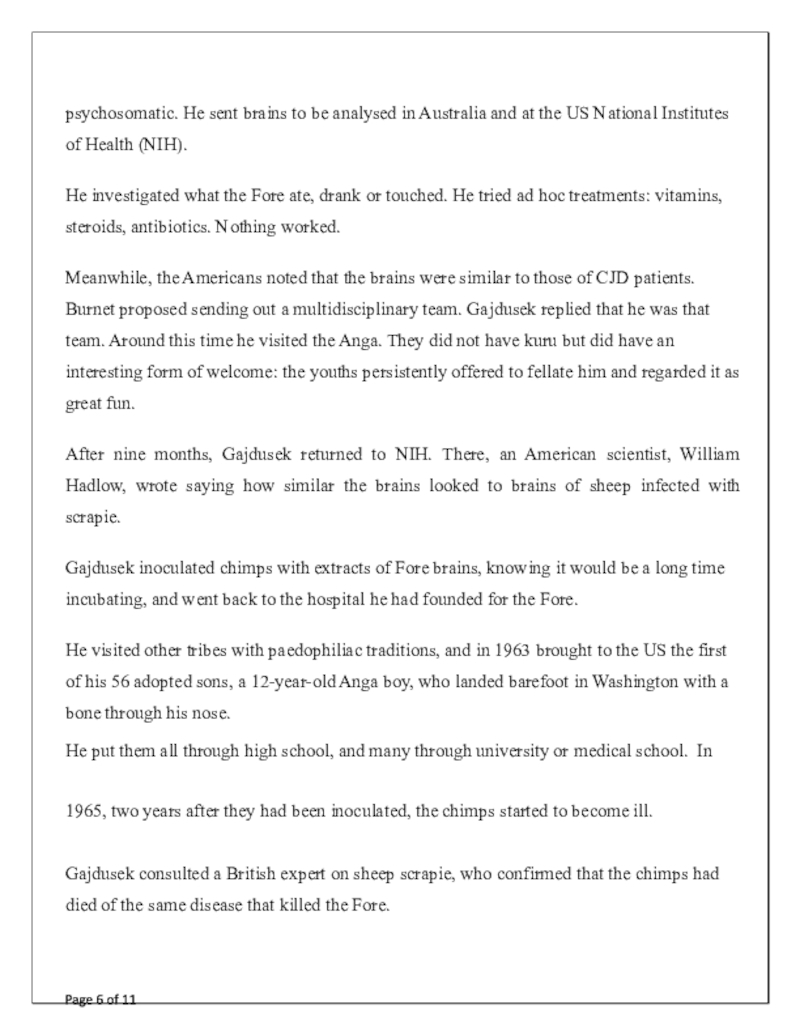



![Dr. Daniel Carleton Gajdusek were caused by a new infectious agent that had not yet were caused by a new infectious agent that had not yet been identified.[2] Further research on the](/img/tmb/7/609412/e2d333497082f2bf2b391d1f41edb54d-800x.jpg)









